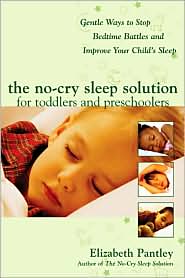By Elizabeth Pantley
Author of The No-Cry Sleep Solution
When your child moves from crib to bed it’s a milestone in his life as well as yours. There is no precise time for making this move, though typically it’s between the first and third birthday. The key to success is to be patient and allow your child time to adjust to the change.
RELATED: Download Our Ages & Stages Chart: Birth to 5 Years Old
Why move a child from crib to bed?
If a child sleeps well in his crib, don’t rush the change. Switching to a bed gives a child freedom and brings new issues for parents, such as the yo-yo syndrome or early morning wanderings. The most common reasons to switch:
- Your child learns how to climb. – Move your child out of the crib when the rail is up to the level of his nipples, since climbing out is more possible.
- Your child outgrows the crib. – Don’t assume it’s time! You may think that he’s uncomfortable, but he may be content in his little nest.
- Your child asks for a bed. – If she’s old enough, then go ahead and take the leap.
- Your child is learning how to use the toilet.— Even if your child uses the toilet during the day, it’s often a long while before bedtime dryness happens.
- A new sibling is on the way. – If your little one loves his crib, then ousting him to make room for the newcomer may add stress. If you feel that the time is right then make the change two months or more before your newborn arrives.
What kind of bed should my child move to?
There are a number of options for a child’s first bed:
- Toddler bed – These are small, low and child-sized. They have guard rails on all sides, and come in playful designs.
- Regular bed – A common choice is a mattress, box springs and bed frame (with all sides protected from fall-outs). Consider a double or bigger size to accommodate the night-reading ritual.
- Mattress on the floor – A popular choice is a mattress or futon on the floor. This provides your little one with a big-kid bed, but one that prevents any painful falls.
- Bunk bed – ?Hold off on a bunk bed until your child is 6 years old, when it is considered safe.
How do we make the change?
Which approach is best for you will depend on your reasons for making the change, your child’s personality, and the size of his room. Here are a few options:
- Big-kid bed hoopla: Some children enjoy having an official Big Kid Day party. Set up the bed, decorate the room and add a few sleep-related gifts like books and stuffed animals.
- One-step-at-a-time: Take the mattress out of the crib and place it on the floor in the place as the crib was. This gives your child the same sleeping surface and view of the room as he’s accustomed to. Place guard rails around the sides to create a crib-like enclosure. Keep the same bedding and crib toys. This is a mid-step between the crib and a real bed.
- The gradual introduction: Set up the new bed in the same room with the crib. Allow your child to play on the bed and nap there. Do your bedtime reading in the new bed. This will help your child get used to the bed gradually.

Patience and encouragement
No matter which path you choose – be patient. Big steps toward growth often happen in spurts, and your child may be excited to welcome the change one day, but wary of it the next. Maintain your nightly bedtime routine and help your child develop a positive association with his new bed, since he’ll be sleeping there for many years to come.
This article is a copyrighted excerpt from The No-Cry Sleep Solution for Toddlers and Preschoolers by Elizabeth Pantley (McGraw-Hill, 2005)
RELATED: Download Our Ages & Stages Chart: Birth to 5 Years Old


